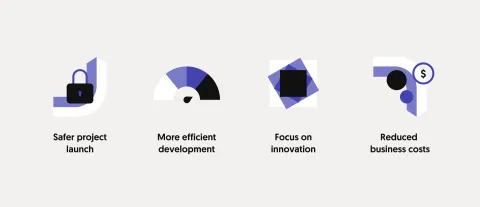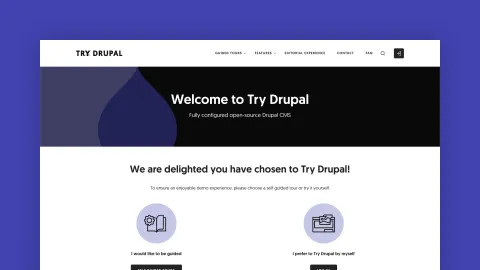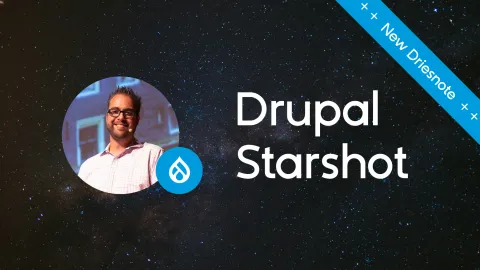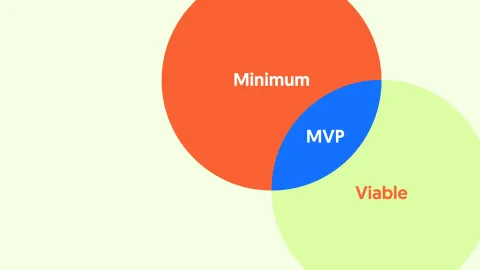Why building on a preconfigured Drupal CMS is a wise investment

Drupal is a versatile CMS with extensive customisation options. Configuring it correctly can be challenging due to its rich functionality. To overcome this we never build with Drupal from scratch. We start every project with our fully configured Drupal CMS in which we have integrated all best practices gathered in over 10 years of Drupal development.
Our approach strongly aligns with Dries Buytaert’s vision for an innovative new Drupal CMS, codenamed Starshot, announced at DrupalCon Portland 2024. Drupal Starshot will become the consistent starting point for ambitious site builders to harness Drupal’s most powerful capabilities.
Our preconfigured CMS is open to the public, and anyone can try it. Try it yourself now!
This is the first in a series of articles where we will share our experience building a preconfigured Drupal CMS so that lessons learned may potentially be applied to Starshot.
Configuring Drupal can be difficult
Drupal is the only enterprise grade open-source CMS. It has been on the market for more than 20 years. Besides the fact that Drupal can be used free of charge, its huge popularity comes from its extensive customisation options.
It can be used as a headless CMS because of its API-first architecture or as a traditional CMS, delivering a coupled frontend together with its backend.
Drupal is a powerful CMS application that can be tailored to many specific use cases. Some of the most common are listed below.

Some of the most common use cases
Corporate websites
Many organisations use Drupal to power their corporate websites. Its robust content management features, customisable frontend, scalability, and integration options make it suitable for managing complex content structures and serving diverse user needs.
E-commerce websites
With the help of modules like Drupal Commerce, Drupal can be transformed into a powerful e-commerce platform. It provides features such as product catalogue management, shopping cart functionality, and secure payment processing.
Intranet and social networking sites
Drupal's user management and community-building features make it suitable for creating intranet solutions and social networking platforms where Drupal facilitates interaction and collaboration among the members.
Educational websites
Drupal's robust user permission system and content organisation capabilities make it well-suited for building educational websites and learning management systems (LMS).
Government portals
Government agencies and public sector organisations often use Drupal to build websites and portals for providing online services and engaging with citizens. Drupal's accessibility features, multilingual support, and security enhancements make it a popular choice for government websites.
Nonprofit and association websites
Nonprofit organisations, charities, and associations use Drupal to create websites that showcase their missions, engage with supporters, and manage online donations.
Drupal CMS is also popular among marketers and publishers, offering a versatile solution for creating engaging marketing landing pages and robust media and publishing platforms.
Its intuitive content management, flexible design, SEO-friendly features, robust media management and integrated tracking and analytics tools are perfect for efficiently managing multimedia content and building engaging websites.
Each of the above have different requirements, and there are often many options how the requirements can be fulfilled. Check out our case studies to see the solutions we have built for our clients.
For individual developers or small teams it can be hard to keep track with the development in the different areas. This leads to unnecessary project risk and larger development efforts.
Reusing is better than inventing
When creating software drawing on the expertise of others allows for a much safer and more efficient development process in comparison to building functionality from scratch.
Also, reusing best practices from others allows developers to focus on the innovative part of the software they are currently working on, because they don’t have to deal with the details that have already been solved elsewhere.
Using a preconfigured system offers several advantages:

However, you can only reuse software created by others if it is created in a generic and reusable way.
Of course, when you reuse software created by others, you should also contribute additions or new functionality back so others can reuse your software. This can be difficult because developers cannot simply produce software for a set of use cases; they have to consider others using their software, too.
This applies both to small software teams that want to become more efficient when creating software as well as to large software projects such as Drupal in which thousands of developers collaborate.
For open-source software projects such as Drupal it can be difficult to find the right balance for developers and companies reusing the code and contributing improvements and new functionality back to the project.
How we integrate “Try Drupal” in our development and consulting procedures
Every successful project needs a solid foundation and that's where our fully configured Drupal CMS comes into play. Try Drupal is an internal Drupal CMS starterkit that includes 90% of the most common features and functionalities out-of-the-box.
In our Drupal projects 80% of the functionality is the same and can be configured before the actual project work starts. Examples of configurations that are difficult to set up, but can usually be reused without much modification are editorial experience, multilingual setup, search, workflows, ecommerce, SEO, and integrations (CDN, logging, monitoring, SAML, SFDC, etc).
Besides reusing configurations the most important aspect of any project is building with a reusable frontend technology.
We have created a component based frontend model with the popular paragraphs modules, a robust theme based on Tailwind CSS, and a design system based on web components.
Besides using the starter kit as a traditional CMS it can also be operated as headless CMS using Drupal’s GraphQL functionality. In this case the design system can be reused for building the frontend.
Whenever we create new functionality in projects, we evaluate whether a generic version can be added to our Drupal CMS to leverage the functionality in other projects.
To make our CMS accessible we have created a demo installation which is used by our developers, project managers, sales experts, and marketeers to review and explore our latest and shiniest Drupal experience. Watch the video below to learn more about our preconfigured Drupal CMS.

Having an on-demand Drupal demo available has helped us greatly to spread the knowledge internally to make sure all colleagues are aware of the latest of our developments.
We also use our demo when consulting our clients about new functionality, because it is much easier to showcase functionality than to explain it.
Our preconfigured Drupal CMS is built with the testing and review software Qaack and available to the public. Feel free to create your own instance and review how we have configured a fully working Drupal installation.
Have fun trying a fully configured Drupal CMS! And if you have any questions or feedback, don´t hesitate to contact us.
Other highlights
1xINTERNET supports the new Drupal Starshot

Dries announced the Starshot initiative, a default CMS config for easy Drupal project creation...
Using a MVP approach for web projects

At 1xINTERNET we use a MVP (Minimum Viable Product) approach for delivering successful web projects...